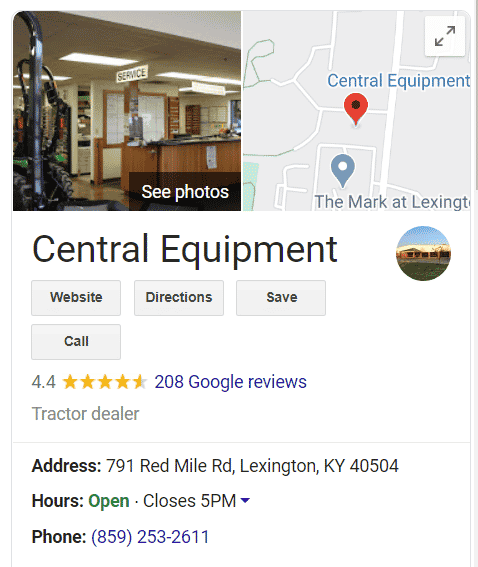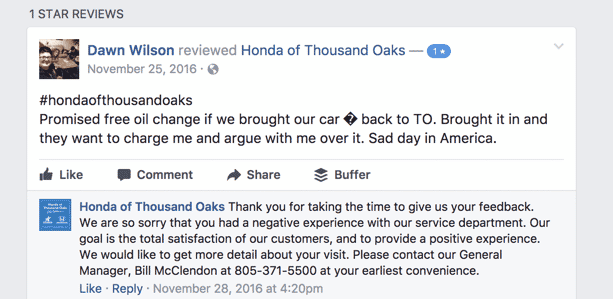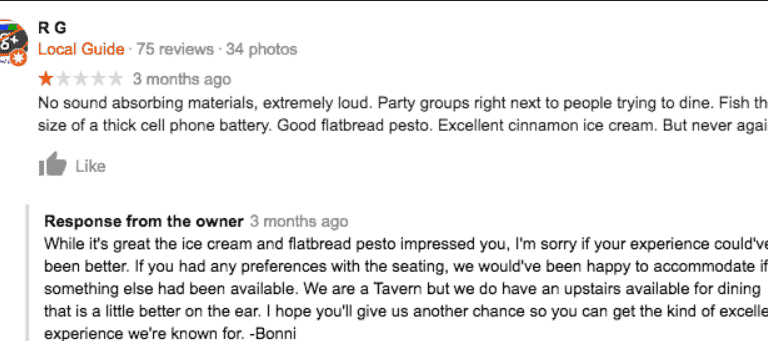Building a social media following high in engagement can be difficult, but with these tips, you can start moving in the right direction!
Facebook, Google+, & Twitter
What works: Images, videos, calls to action, industry-related content, general share-worthy content.
What doesn’t work: Lengthy content, bland content, poor business/related/share-worthy balance.
Videos and images are best used to catch the eye of social media readers, though video works a little better to hold the reader’s attention. Whether it’s redirecting consumers to your website or online store, or getting them to stop and look at an interesting piece of content titled by your business; Images and videos are your anchor when trying to increase your audience’s social media engagement.
The three best ways to get traction from your readers are to:
- Get them to go straight to your website or store.
- Get them to like/follow.
- Get them to share your content.
Let’s say three people see your business posts about that 20% off sale. These posts are not likely to be shared, so those same three people will see all your posts, and that’s it.
Once people start liking and sharing your posts, you’ll start to see new eyes on your page.
This is where industry related/general share-worthy content comes in.
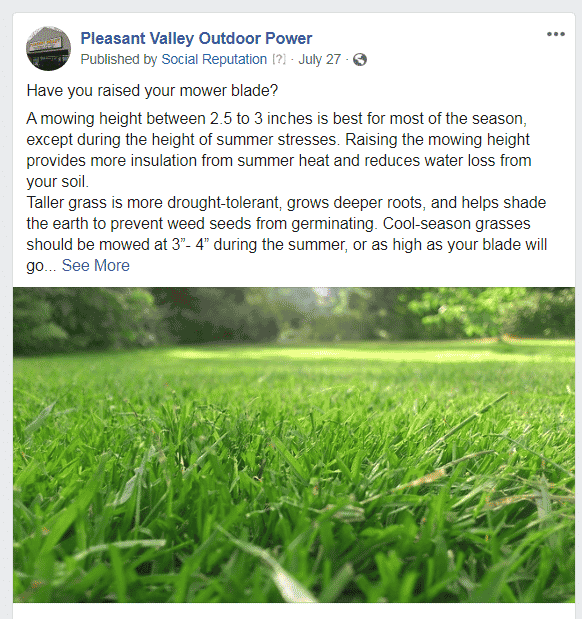
If you’re an outdoor power equipment dealership, for example, get your readers excited to see and share those maintenance tips! When people are excited to read and share it, you have a better chance that someone who needs professional repairs or a new mower will come across them. Having a good mix of these types of posts is extremely important.
Call To Action
Once you’ve gained the attention of your readers with a photo or video, a call to action is a great way to guide them to their next step.
“Do you like these equipment upgrades? Let’s get started with yours!”
As seen in this above example, calls to action can be used for almost every type of post. Tell your reader to check out your website for a business related post, or tell them to read the article or video you’re sharing. Though industry-related or share-worthy content may not lead your reader straight to your website, the posts are more likely to gain likes and shares, which expands your audience in general.
Packaged in with the importance of shared content is the name of your business. Every time your post is shared, someone new has the chance to see you. That’s brand-recognition, baby! When the time comes for that person to need a dealer or repair guy, they’ll remember the interesting blade-sharpening posts you shared and seek out the name they remember seeing or hearing about. Reaching out in comments and replying to people is also a great way to encourage people to participate.
Work/Fun Balance
On the other hand, lengthy content, bland posts, and a poor balance of business/industry/shareable don’t work well on these media channels. Lengthy content is an especially bad choice for Twitter’s 140 character count limit. As for Facebook and Google+, people just don’t have the attention spans to read posts that are more than a couple of lines long. Keep them short and concise! Don’t post bland, filler content like, “Happy Friday!” unless people have a reason to share it. “Happy Friday, here’s a hilarious meme” can improve brand recognition, but only if shared- use humor to your advantage.
Find your balance between business and shareable content. Too much boring business related posts and calls to action can lead to a stagnant viewer count, while too many meme-based share-worthy posts may lead to your readers not knowing what your business does.
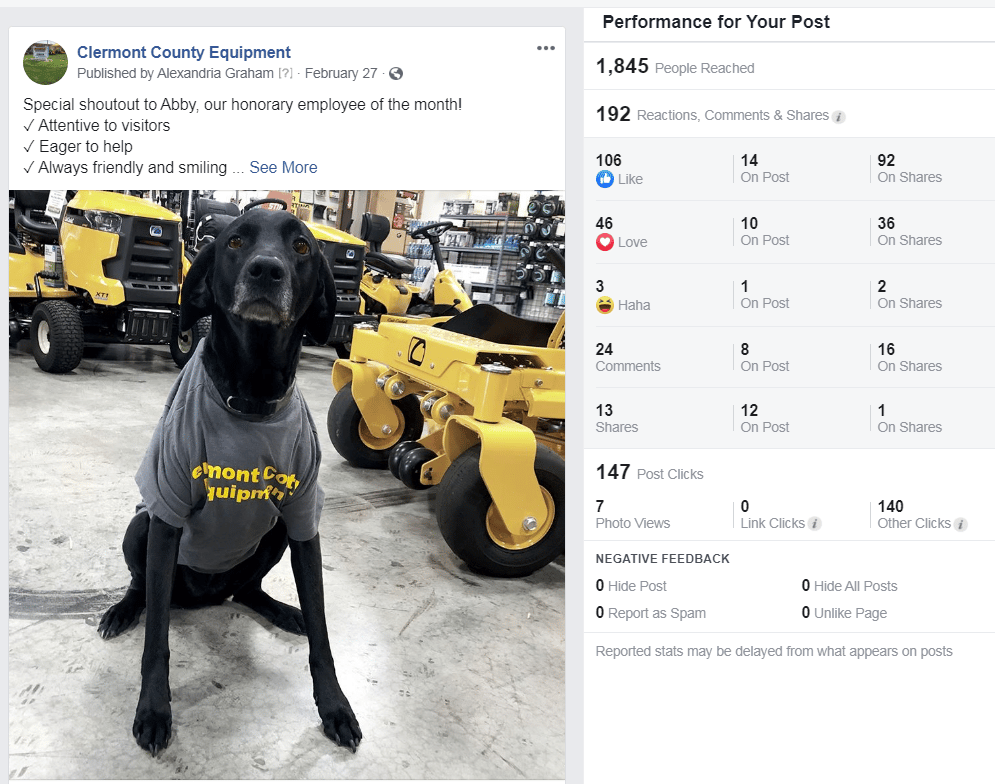
What works: Images, videos, industry related content, general share-worthy content.
What doesn’t work: Lengthy content, bland content, and it may not suit your vertical.
Pinterest, like Instagram below, is all about the pictures. If you’ve ever been on Pinterest, you know that it’s a very visual sight to behold. The hook of Pinterest is that people are looking for ideas. This will work best for you if your business provides ideas or the means with which to make ideas happen.
A hardware store can benefit from Pinterest because you may share tree-house building ideas with your store’s name attached.
Don’t forget about brand recognition!
Once people get the ideas from you, they’ll come into your store to buy the tools they need for the job. The best use of Pinterest includes non-business related content. Show people ideas that may lead them to your business, but don’t try to sell them right then and there. The key social media engagement metric for pinterest is seeing your collected pins saved to their own board – or people following the boards you make.
However, Pinterest may not suit your vertical, and it definitely won’t prosper with too much emphasis on text. Many verticals such as plumbing just don’t have many corresponding ideas given the nature of the job. In this case, Pinterest can only be used for shareable content and brand recognition. The text attached to Pinterest posts is often ignored, so any applicable text should go into an infographic displayed as an image.
That isn’t to say that you shouldn’t use any text. A small headline or message will suffice here.
Pinterest is not geographically-focused, so if you’re a small company who doesn’t sell online, this may not be the platform for you.
What works: Images, projects.
What doesn’t work: Mostly everything else.
Instagram is a strange beast. The entire point of this medium is to compel readers to follow you and talk about what you offer. This works best for verticals like restaurants or artists because your customers can post images of your food or projects for their friends to see. This can also work for verticals like home improvement.
In this vertical, your business can post project and progress images of what you’ve been working on. Seeing these images and sharing them can work well to compel the reader to seek you out.
Instagram posts can’t include links, so just like Pinterest, the aim here is brand recognition. Can you consistently post interesting enough images for your readers to stay interested?
Not every business can.

Instagram is owned by Facebook, so if you want to put ads on Instagram, you’ll need to go through Facebook’s ads manager. Ads on Instagram do have a ‘Shop Now’ link to push to your website and bypass them needing to visit your Instagram profile.
Like any Instagram post, the key to getting good social engagement here is to provide an appealing image that motivates people to want to read and learn more about it.
Since you can target ads, you’ll have a bit better luck finding people already interested in the products you sell, but you have to pay for those. It’s not organic (free) marketing.
Reviews
Now that we’ve covered the main social media channels, let’s discuss other ways they can be used.
Facebook, Google+, and other media channels support reviews. Aside from the engagement from posts, reviews can make or break a business. You may be thinking “I can’t control what people rate my business”, and you’d be right. However, you can control how you respond to people.
You can turn around even the angriest rater by replying to their review in a quick and professional manner. You can also use reviews as a way to look at your own behavior in-store, because people are very quick to respond with a bad review if they think they received poor customer service.
Social Listening
Forbes discusses social listening as finding where your audience is discussing topics related to your brand.
People are talking about lawns somewhere, and these are great topics for your dealership. The short and sweet of this is that you need to be researching your competitors and your peers.
What are people talking about, liking, and sharing, and how can you get in on it? You’ll want to shape your social media strategies around what’s getting the best traction everywhere else.
If you know what people are already talking about, you’ll be able to hop into the conversation with comments relevant to the discussion, and keep that social media engagement train rolling!
Get researching!
SEO
This likely isn’t the first time you’ve read about the importance of SEO, and it definitely won’t be your last. When you search your business’s name or keywords related to your work, how high on the results page does it appear?
The more you and your readers are mentioning your name and other keywords in relation to your business, the better your SEO results will be.
Measure Success
Finally, take a step back and look at what you’re doing. Naturally, you’ll want to look for what’s working and what isn’t. Whether you’re counting likes and shares by hand or using Google Analytics to track the information for you, understanding your trends may just be the most important part of the process of engaging on social media channels, so what are you waiting for?
Social Media Engagement can be hard to get right, but it's also the key metric in growing any audience.
Was this helpful? Read more advice and guides on our blog!





